 |
McLeans Ridges Weather Webcam Weather and Sky camera and AWS near Lismore NSW |
 |
 |
Tropical Cyclones Current and historic cyclone tracking maps and warnings for Australia and the Southern Hemisphere |
 |
|
|
|
Lismore Floods: Wilsons River Flood Heights and Lismore Flood Pictures Richmond River Catchment Northeast NSW Report and all photos by Michael Bath Facebook page: www.facebook.com/nnswweather For current rainfall, river height and warning information refer to the North Coast Rainfall and River Conditions and Bureau of Meteorology Warnings. For help during and after a flood event visit the Lismore City Council pages. Updated: 13 March 2025 |
The Northern Rivers district of NSW, Australia is one of the most flood prone
areas of the country outside of the tropics. With Lismore at the junction of two
major streams - Leycester Creek and Wilsons River - it is often subject to significant
flooding.
Topography and the alignment of the Northern NSW coast relative to prevailing
weather patterns allows for prolonged orographically enhanced rainfall events
from time to time - particularly during late Summer, Autumn and early Winter.
During those months large slow-moving (blocking) high pressure systems are often
positioned around 40 degrees south and provide a long fetch of moisture-laden
southeast to easterly winds onto the North Coast. Flood producing heavy rainfall
can occur if the high combines with a trough, low pressure system, tropical cyclone,
upper trough / cold pool and even the monsoon trough. It is not essential for
a strong 'blocking' high pressure system to help cause a flood, but it is nearly
always present for the major events - as it keeps the rain producing systems in
the same area longer. Some examples of flood producing weather patterns:
Lismore location maps from Google Maps. Click for larger view.
Wilsons River and Richmond River Flood Plain and Catchment Maps
The Wilsons River at Eltham, Leycester Creek at Rock Valley, Coopers Creek at Corndale and Terrania Creek upstream from Lismore represent
only about one-quarter of the Richmond River catchment, however the majority of
flooding occurs in this area and through to Coraki. The Nightcap Range to the
north of Lismore, and hills extending through Bangalow to near Alstonville often
receive much higher rainfall than the rest of the region due to orographic effects
and because it is closer to the coast and the source of rain-bearing clouds. The
floodplain is also narrower due to hilly terrain. South and west of Lismore the
terrain is quite flat and the floodplain very wide in comparison.
Major flooding of the Richmond River upstream from Coraki requires heavy rainfall
west of the Nightcap and Border Ranges and into the eastern parts of the Richmond
Range. This occurs far less frequently than Lismore flooding, with February 1954
and January 2008 the stand-out events for Casino, Kyogle and Wiangaree.
Heavy rainfall occurring over the generally flat country and eastern parts
of the Richmond Range in the southwest of the catchment contributes to flooding
at Coraki, Woodburn and downstream. Heavy rainfall on the southern side of the
Alstonville Plateau also affects the Lower Richmond River.
Another part of the catchment is the Teven Valley and North Creek northwest
and north of Ballina. Flooding can occur in this area during very heavy rainfall
although those waters quickly enter the Richmond River.
Richmond River catchment map source
Lismore Flood Heights
Australian Height
Datum (AHD) was introduced in the late 1990s. AHD flood height measurements are
0.78 metres lower than the old gauge readings that many readers may recall. Flood
heights in other parts of Lismore vary depending on a number of factors including
the volume and speed of water coming down the Wilsons River and Leycester Creeks,
the amount of local flooding due to heavy rain in Lismore, whether the Browns
Creek pump is operational and whether levees have or are being overtopped.
The Lismore central business district used to begin flooding when the Wilsons
River reached 9.42m AHD. Water would flow into the streets near the old Post Office
at the corner of Molesworth and Magellan streets. Major flows into the city would
occur by 9.72m AHD with most of the CBD inundated when the river level reached
10.22m AHD.
A concrete wall flood levee was constructed over a couple of years and finished
in March 2005. It protects the CBD from floods up to about 10.65m AHD. Flood waters
during major events will still top the levee but will start to enter streets at
the Browns Creek spillway on Molesworth Street between Woodlark and Zadoc streets.
A long established earthen levee protects South Lismore from all but major floods
exceeding 10.95m AHD. North Lismore has no flood protection and is the first area
to be cut off.
Prior to February 2022, the highest recorded Lismore flood levels were on 21st February 1954 and 11th
March 1974. Signs such as this one are displayed on power poles throughout the
city to mark the highest level floodwaters reached. The record flood height was comprehensively broken by more than 2 metres on 28th February 2022.
Daily rainfall data from all sites in the Northern Rivers and eastern parts of the Northern Tablelands are included for each flood event.
Tropical cyclone tracking map links are listed where it is known they directly or indirectly contributed to a flood event. Infrared satellite picture loops are available for flood events since 1983.


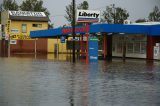
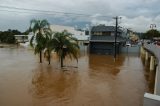
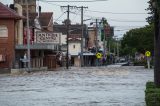
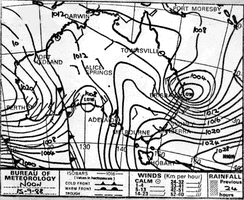
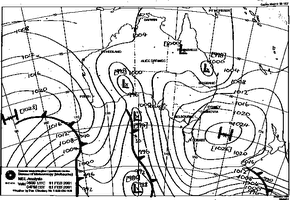

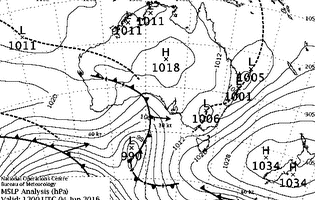


 The Lismore flood gauge is on the rowing club building at the western end of Magellan
Street (red dot on the Lismore Map) and became operational in 1917. River heights since the November 1917 flood are all taken from that point. Prior to 1917 the flood gauge was on Fawcetts Bridge, where Woodlark Street crosses the Wilsons River. Flood heights prior to 1917 cannot be relied on for the purposes of present-day comparisons.
The Lismore flood gauge is on the rowing club building at the western end of Magellan
Street (red dot on the Lismore Map) and became operational in 1917. River heights since the November 1917 flood are all taken from that point. Prior to 1917 the flood gauge was on Fawcetts Bridge, where Woodlark Street crosses the Wilsons River. Flood heights prior to 1917 cannot be relied on for the purposes of present-day comparisons.
| Bureau of Meterology flood levels (metres AHD) for the Wilsons River at Lismore |
Minor: 4.2 |
Moderate: 7.2 |
Major: 9.7 |
This table includes all known floods that reached at least the minor flood classication level at the official Lismore gauge. There have been many other significant rain and flood events in the Northern Rivers region which have not reached the minor flood level in Lismore. For the early years (pre 1920s) many minor flood events were not logged in the historic records.
Flood levels listed prior to 1917 are incomplete and cannot be directly compared to heights at the Rowing Club gauge in Magellan Street.
Click graph for larger view.
 See also: Wilsons River at Eltham Flood Heights | Coopers Creek at Corndale Flood Heights | Leycester Creek at Rock Valley Flood Heights
See also: Wilsons River at Eltham Flood Heights | Coopers Creek at Corndale Flood Heights | Leycester Creek at Rock Valley Flood Heights
| Early Years | Minor | Moderate | Major | Notes and synoptic situation | Rainfall, Maps and Photos | |
| 21-22nd January | 1887 | 11.58 | Flood height was an estimate of 38 feet. |
Rain: Northern Rivers Rain: Northern Tablelands |
||
| 8th March | 1890 | 12.46 | Flood height was an estimate of 40 feet. |
Rain: Northern Rivers Rain: Northern Tablelands |
||
| 2-3rd April | 1892 | 10.59 | First flood height measurement using the Fawcetts Bridge (Woodlark Street) gauge. All previous heights were estimates. |
Rain: Northern Rivers Rain: Northern Tablelands |
||
| 22nd January | 1893 | 8.30 |
Rain: Northern Rivers Rain: Northern Tablelands |
|||
| 11th February | 1893 | 10.43 | February 1893 was Lismore's wettest month with 799mm on 27 raindays for well over a century, only exceeded during March 2017 with 806.8mm. Flood peaks were likely 11-12 Feb and also 16-18 Feb. Some publications have the 1893 flood occurring in March 1893 but the rainfall figures show it was February 1893. |
Rain: Northern Rivers Rain: Northern Tablelands |
||
| 31st March | 1904 | n/a | Rainfall data shows a significant flood occurred 31st March - 1st April though no height is available. |
Rain: Northern Rivers Rain: Northern Tablelands |
||
| 8-10th November | 1917 | 8.77 | First flood height using the Rowing Club gauge at the end of Magellan Street. All flood heights from this date forward can be compared. |
Rain: Northern Rivers Rain: Northern Tablelands |
||
| 15-17th May | 1921 | 8.13 | Rainfall data suggests the May 1921 flood may have peaked higher than this. |
Rain: Northern Rivers Rain: Northern Tablelands |
||
| 23rd July | 1921 | 10.79 |
Rain: Northern Rivers Rain: Northern Tablelands |
|||
| 5-18th March | 1925 | n/a | Prolonged flooding with possible multiple peaks in the moderate range. |
Rain: Northern Rivers Rain: Northern Tablelands |
||
| 24-28th January | 1927 | n/a | Possible minor flood on the 11th with moderate flooding from the 24th. |
Rain: Northern Rivers Rain: Northern Tablelands |
||
| 6-16th February | 1928 | 5.42 |
Rain: Northern Rivers Rain: Northern Tablelands |
|||
| 1-2nd March | 1929 | 7.75 |
Rain: Northern Rivers Rain: Northern Tablelands |
|||
| 30th June | 1929 | 5.32 |
Rain: Northern Rivers Rain: Northern Tablelands |
|||
| 6th February | 1931 | 10.96 |
Rain: Northern Rivers Rain: Northern Tablelands |
|||
| 9th May | 1934 | n/a | This event is not listed in the archives. Rainfall figures suggest a moderate flood was likely. |
Rain: Northern Rivers Rain: Northern Tablelands |
||
| 8-17th March | 1937 | 5.53 | Probably two peaks: 10th and 17th. |
Rain: Northern Rivers Rain: Northern Tablelands |
||
| 17-21st January | 1938 | 8.07 |
Rain: Northern Rivers Rain: Northern Tablelands |
|||
| 10-12th April | 1938 | 8.09 |
Rain: Northern Rivers Rain: Northern Tablelands |
|||
| 22-27th May | 1938 | 8.71 |
Rain: Northern Rivers Rain: Northern Tablelands |
|||
| 4-6th March | 1939 | 7.96 |
Rain: Northern Rivers Rain: Northern Tablelands |
|||
| 1940s | Minor | Moderate | Major | Notes and synoptic situation | Rainfall, Maps and Photos | |
| 2-3rd December | 1940 | n/a |
Rain: Northern Rivers Rain: Northern Tablelands |
|||
| 31st December | 1943 | n/a | Flood peak may have been 1st January 1944. |
Rain: Northern Rivers Rain: Northern Tablelands |
||
| 26-29th January | 1944 | n/a |
Rain: Northern Rivers Rain: Northern Tablelands |
|||
| 11th June | 1945 | 11.29 | Mostly likely an East Coast Low. Rain stopped 6pm Monday. Worst in history. Browns Creek raging torrent over Spinks Bridge. River peak may be higher than this. |
Rain: Northern Rivers Rain: Northern Tablelands |
||
| 25th March | 1946 | 6.18 |
Rain: Northern Rivers Rain: Northern Tablelands |
|||
| 2nd May | 1948 | 6.69 |
Rain: Northern Rivers Rain: Northern Tablelands Surface Reanalysis |
|||
| 16th June | 1948 | 10.74 | Peak most likely evening of 16th. |
Rain: Northern Rivers Rain: Northern Tablelands Surface Reanalysis |
||
| 1950s | Minor | Moderate | Major | Notes and synoptic situation | Rainfall, Maps and Photos | |
| 28th February | 1950 | 5.37 | Prolonged period of wet weather which eventually led to a minor flood peak. |
Rain: Northern Rivers Rain: Northern Tablelands Surface Reanalysis |
||
| 24th June | 1950 | 9.48 |
Rain: Northern Rivers Rain: Northern Tablelands Surface Reanalysis |
|||
| 27th January | 1951 | 8.87 |
Rain: Northern Rivers Rain: Northern Tablelands Surface Reanalysis |
|||
| 18-20th March | 1951 | 7.81 |
Rain: Northern Rivers Rain: Northern Tablelands Surface Reanalysis |
|||
| 8th June | 1951 | 5.54 |
Rain: Northern Rivers Rain: Northern Tablelands Surface Reanalysis |
|||
| 21st February | 1953 | 9.51 | Creeping flood from a prolonged period of very wet weather. |
Rain: Northern Rivers Rain: Northern Tablelands Surface Reanalysis |
||
| 20-24th March | 1953 | 7.21 |
Rain: Northern Rivers Rain: Northern Tablelands Surface Reanalysis |
|||
| 5am 21st February | 1954 | 12.27 * | Rain depression from ex TC on 9-11th, then Tropical Cyclone 195303 from midday Friday to early Sunday morning. '54 Flood Disaster. Clear skies Sunday. All communications failed. Highest ever peak Lismore (maybe 12.63m), Kyogle, Casino, Nimbin and Murwillumbah. Some locations had over 1,000mm of rain in 12 days. Detailed report available: Hydrological features of the 1954 North Coast Floods |
Rain: Northern Rivers Northern Tablelands Surface Reanalysis |
||
| 14th July | 1954 | 8.95 |
Rain: Northern Rivers Rain: Northern Tablelands Surface Reanalysis |
|||
| 29th March | 1955 | 8.92 |
Rain: Northern Rivers Rain: Northern Tablelands Surface Reanalysis |
|||
| 5-6th April | 1955 | 6.02 | Low presure system that caused the previous flood a week ago returned. |
Rain: Northern Rivers Rain: Northern Tablelands Surface Reanalysis |
||
| 1st May | 1955 | 7.14 |
Rain: Northern Rivers Rain: Northern Tablelands Surface Reanalysis |
|||
| 11-13th December | 1955 | 6.98 |
Rain: Northern Rivers Rain: Northern Tablelands Surface Reanalysis |
|||
| 11pm 18th February | 1956 | 11.54 | Rain event earlier in the month then a tropical low moving S-SW. Robert White bridge collapsed. Sudden stop to rain Saturday afternoon. Sensational rise in creek levels at Nimbin. |
Rain: Northern Rivers Rain: Northern Tablelands Surface Reanalysis |
||
| 19-20th June | 1958 | 5.67 | Rainfall data suggests flooding around the 11th as well - perhaps two peaks occurred. |
Rain: Northern Rivers Rain: Northern Tablelands Surface Reanalysis |
||
| 6-7th August | 1958 | 7.07 |
Rain: Northern Rivers Rain: Northern Tablelands Surface Reanalysis |
|||
| 21-24th January | 1959 | 8.14 | Caused by Tropical Cyclone Beatrice |
Rain: Northern Rivers Rain: Northern Tablelands Surface Reanalysis |
||
| 17-20th February | 1959 | 8.15 |
Rain: Northern Rivers Rain: Northern Tablelands Surface Reanalysis |
|||
| 18-29th March | 1959 | n/a |
Rain: Northern Rivers Rain: Northern Tablelands Surface Reanalysis |
|||
| 9-13th November | 1959 | 7.22 |
Rain: Northern Rivers Rain: Northern Tablelands Surface Reanalysis |
|||
| 1960s | Minor | Moderate | Major | Notes and synoptic situation | Rainfall, Maps and Photos | |
| 18-20th February | 1961 | 7.17 |
Rain: Northern Rivers Rain: Northern Tablelands Surface Reanalysis |
|||
| 6-8th January | 1962 | 6.13 | Rainfall data indicates another minor flood peak was likely on the 15th. |
Rain: Northern Rivers Rain: Northern Tablelands Surface Reanalysis |
||
| 7-9th April | 1962 | 7.02 |
Rain: Northern Rivers Rain: Northern Tablelands Surface Reanalysis |
|||
| 11am 11th July | 1962 | 11.36 | Cyclonic depression off Gold Coast. Highest ever peak Repentance Ck, The Channon, Bentley. Flood firsts - NRTV, Northern Star uninterrupted production. |
Rain: Northern Rivers Rain: Northern Tablelands Surface Reanalysis |
||
| 1-2nd January | 1963 | 5.74 |
Rain: Northern Rivers Rain: Northern Tablelands Surface Reanalysis |
|||
| 15-18th March | 1963 | 6.11 |
Rain: Northern Rivers Rain: Northern Tablelands Surface Reanalysis |
|||
| 26-28th April | 1963 | 5.29 |
Rain: Northern Rivers Rain: Northern Tablelands Surface Reanalysis |
|||
| 7pm 8th May | 1963 | 11.06 | Trough in central western districts. Upper low then surface low off Cape Byron Tuesday night. All North Coast flooded. Equal highest peak Bentley. This flood followed a minor flood just 10 days earlier. |
Rain: Northern Rivers Rain: Northern Tablelands Surface Reanalysis |
||
| 26-27th March | 1964 | 5.51 | Some heavy rainfalls also occurred between the 8th and 10th March. |
Rain: Northern Rivers Rain: Northern Tablelands Surface Reanalysis |
||
| 1am 21st July | 1965 | 10.43 | Very cold southerly then rain depression moving south. Possibly similar to September 1988. Only 6 raindays in whole month. Worst drought in years. Deepfreeze over state. Snow in Sydney. 1st flood for the Tuckombil Flood Canal. Waterspout off Cape Byron. |
Rain: Northern Rivers Rain: Northern Tablelands Surface Reanalysis |
||
| 9-11th June | 1966 | 5.51 |
Rain: Northern Rivers Rain: Northern Tablelands Surface Reanalysis |
|||
| 11am 19th March | 1967 | 10.27 | Tropical Cyclone Elaine and another tropical low operationally classified tropical cyclone "Dulcie" combined. Record floods in north Queensland. |
Rain: Northern Rivers Rain: Northern Tablelands Surface Reanalysis |
||
| 3am 13th June | 1967 | 8.20 | 1st peak. | |||
| 4pm 14th June | 1967 | 9.49 | Lows off SE Queensland coast. 1030hp high. Worst flooding on the Gold Coast in 25yrs. Grafton badly hit. 2nd peak in Lismore. |
Rain: Northern Rivers Rain: Northern Tablelands Surface Reanalysis |
||
| 11am 23rd June | 1967 | 5.09 | Another low off the coast moving quickly south. |
Rain: Northern Rivers Rain: Northern Tablelands Surface Reanalysis |
||
| 2am 28th June | 1967 | 6.79 | Complex trough and depression off coast near Cape Byron. 1030hp high. Seas batter coast. 4th June flood peak. |
Rain: Northern Rivers Rain: Northern Tablelands Surface Reanalysis |
||
| 10-13th January | 1968 | 5.75 |
Rain: Northern Rivers Rain: Northern Tablelands Surface Reanalysis |
|||
| 1970s | Minor | Moderate | Major | Notes and synoptic situation | Rainfall, Maps and Photos | |
| 8-10th December | 1970 | 6.69 |
Rain: Northern Rivers Rain: Northern Tablelands Surface Reanalysis |
|||
| 17-19th February | 1971 | 6.41 |
Rain: Northern Rivers Rain: Northern Tablelands Surface Reanalysis |
|||
| 6pm 13th February | 1972 | 9.43 | Tropical Cyclone Daisy and Tropical Cyclone Wendy. 1036hp high. Severe beach erosion. 1st test for Browns Creek Pump which cut the flood peak by feet. |
Rain: Northern Rivers Rain: Northern Tablelands Surface Reanalysis |
||
| 8-9th March | 1972 | 5.67 |
Rain: Northern Rivers Rain: Northern Tablelands Surface Reanalysis |
|||
| 3-4th April | 1972 | 5.07 | Tropical Cyclone Emily |
Rain: Northern Rivers Rain: Northern Tablelands Surface Reanalysis |
||
| 6am 29th October | 1972 | 10.09 | Upper disturbance then a low in north of state. 1030hp high. First October flood. Browns Ck Pump kept water 1m lower in basin. Record rainfalls for year and month. |
Rain: Northern Rivers Rain: Northern Tablelands Surface Reanalysis |
||
| 14-17th February | 1973 | 5.62 |
Rain: Northern Rivers Rain: Northern Tablelands Surface Reanalysis |
|||
| 6pm 27th January | 1974 | 9.13 | Tropical Cyclone Wanda and intense rain depression moving SE from NW Queensland. Australia Day Flood. Massive flooding in Brisbane - worst of the century. |
Rain: Northern Rivers Rain: Northern Tablelands Surface Reanalysis |
||
| am 11th March | 1974 | 12.15 * | Upper disturbance and very small localised low pressure. 1028hp high. South Lismore levee breached. Shock flood worst ever. Highest ever peaks Wyrallah, Tuckarimba, Coraki, Woodburn, Bungawalbyn. Brisbane 2nd Flood. |
Rain: Northern Rivers Rain: Northern Tablelands Surface Reanalysis |
||
| am 13th March | 1974 | 9.81 | 2nd peak due to Ex-Tropical Cyclone Zoe moving rapidly south. '74 Flood - second hit. |
Rain: Northern Rivers Rain: Northern Tablelands Surface Reanalysis |
||
| 3pm 23rd April | 1974 | 8.97 | Upper disturbances in north of state. 1030hp high. |
Rain: Northern Rivers Rain: Northern Tablelands Surface Reanalysis |
||
| 4pm 3rd June | 1974 | 7.52 | 1030hp high. Small low off border. Flood peril returns. 10 years to recover. |
Rain: Northern Rivers Rain: Northern Tablelands Surface Reanalysis |
||
| 12pm 3rd March | 1975 | 10.53 | Upper disturbance then surface low off the coast. 1030hp high. SES spot on with predictions. Waterspout or tornado Lennox Head. |
Rain: Northern Rivers Rain: Northern Tablelands Surface Reanalysis |
||
| 6am 12th February | 1976 | 7.62 | Tropical depression moving across country. ex TC. Weak high. Tabulam devastated - worst flood ever. |
Rain: Northern Rivers Rain: Northern Tablelands Surface Reanalysis |
||
| 9am 29th February | 1976 | 10.14 | Upper disturbances. NE winds from weak high then Tropical Cyclone Colin. Leap year flood. Wilsons river currents - 4ft/hr rise. Sirens used. Teven devastated. Highest ever peak Nashua, Eltham, Tatham. Federal recorded 290mm of rain in just 4 hours. |
Rain: Northern Rivers Rain: Northern Tablelands Surface Reanalysis |
||
| 3rd March | 1977 | n/a | Significant falls in the Wilsons River catchment with a near major flood in the Eltham Valley. No flood level available for Lismore but suspect minor flooding ocurred late on the 3rd. | Rain: Northern Rivers | ||
| 12pm 19th March | 1978 | 9.97 | 1034hp high cradling deepening low moving SW. Mt Nardi Deluge - 660mm. |
Rain: Northern Rivers Rain: Northern Tablelands Surface Reanalysis |
||
| 1980s | Minor | Moderate | Major | Notes and synoptic situation | Rainfall, Maps and Photos | |
| 7am 10th May | 1980 | 9.53 | Strengthening high and small low moving south. Rain a boost to district - a lot more needed though. |
Rain: Northern Rivers Rain: Northern Tablelands Surface Reanalysis |
||
| 4pm 23rd June | 1983 | 8.18 | 1028hp high, upper disturbance and small low moving south. 1st satellite photos in paper. |
Rain: Northern Rivers Rain: Northern Tablelands Satellite |Surface Reanalysis |
||
| 1am 10th April | 1984 | 9.84 | Ex-Tropical Cyclone Lance and northern NSW low. 1030hp high. Gales. Major flood a close thing. House With No Steps losses great. |
Rain: Northern Rivers Rain: Northern Tablelands Satellite | Surface Reanalysis |
||
| 1st November | 1984 | n/a | Significant falls in the Wilsons River catchment with a near major flood in the Eltham Valley. No flood level available for Lismore but suspect minor flooding ocurred late on the 1st. | Rain: Northern Rivers | ||
| 9th July | 1985 | n/a | Significant falls in the Wilsons River catchment (> 200mm in 24 hours) with a major flood in the Eltham Valley. No flood level available for Lismore but suspect minor flooding ocurred late on 9th or early 10th. |
Rain: Northern Rivers Rain: Northern Tablelands |
||
| 8am 6th March | 1987 | 10.43 | Small low off Tweed Heads which formed from Ex-Tropical Cyclone Elsie after it crossed country. 1030hp high. Lismore ready for major flood. Worst since 74. Rocky Ck dam full. Drought preceded flood - especially on Gold Coast. |
Rain: Northern Rivers Rain: Northern Tablelands Satellite | MSL Charts | Surface Reanalysis |
||
| 8am 11th May | 1987 | 10.78 | Slow moving 1037hp high and upper air disturbance. Mothers Day Flood. 2nd major CBD inundation in 2 months - only year to have two major floods.
Photos: 11th May 1987 |
Rain: Northern Rivers Rain: Northern Tablelands Satellite | MSL Charts | Surface Reanalysis |
||
| 10am 7th April | 1988 | 9.10 | Tropical low moving across country and upper disturbances and lows off SE Queensland. Easter Flood. Floods in red centre, NSW and QLD. |
Rain: Northern Rivers Rain: Northern Tablelands Satellite | Surface Reanalysis |
||
| 5pm 12th April | 1988 | 9.46 | Small low and upper disturbance. 1038hp high. Longest flood. Woodburns worst - not highest. 2nd peak in Lismore in a week. |
Rain: Northern Rivers Rain: Northern Tablelands Satellite | Surface Reanalysis |
||
| 6th June | 1988 | 4.42 |
Rain: Northern Rivers Rain: Northern Tablelands Satellite | Surface Reanalysis |
|||
| 11pm 16th September | 1988 | 6.94 | Deepening low moving down coast. 1030hp ridging high. Rain stopped just in time. First September flood. |
Rain: Northern Rivers Rain: Northern Tablelands Satellite | Surface Reanalysis |
||
| 19th December | 1988 | 4.72 |
Rain: Northern Rivers Rain: Northern Tablelands Satellite | Surface Reanalysis |
|||
| 29th January | 1989 | 5.22 | Two weak lows moving down coast. 1020hp high. |
Rain: Northern Rivers Rain: Northern Tablelands Satellite | Surface Reanalysis |
||
| 11am 2nd April | 1989 | 11.28 | Multiple upper disturbances. Slow moving 1037hp high. April Fools Day Flood. Leycester Ck pushed back Wilsons. Incredible rise of river. South Lismore levee breached. Oil flood. Tropical Cyclone Aivu North QLD. |
Rain: Northern Rivers Rain: Northern Tablelands Satellite | Surface Reanalysis |
||
| 6am 27th April | 1989 | 9.15 | Upper low then deepening surface low moving down coast. 1034hp high weakening. 2nd flood in a month. Cyclonic wind - Easterly then calm then Westerly.
Photos: 27th April 1989 |
Rain: Northern Rivers Rain: Northern Tablelands Satellite | Surface Reanalysis |
||
| 1990s | Minor | Moderate | Major | Notes and synoptic situation | Rainfall, Maps and Photos | |
| pm 3rd February | 1990 | 8.10 | Tropical Cyclone Nancy with well developed upper trough extending to Victoria along the East Coast. 1026hp high over NZ and 1034hp high over Bight. Major flooding in Sydney and Hunter Valley. Eye of tropical cyclone crossed Cape Byron - winds were calm for a short time. |
Rain: Northern Rivers Rain: Northern Tablelands Satellite | Surface Reanalysis |
||
| am 7th April | 1990 | 5.72 | Upper air disturbance from ex TC Ivor, and 1036hp high centred in the Tasman Sea. Minor flooding in Lismore but moderate flooding on the Clarence River. The remains of TC Ivor as an upper low, continued for two more weeks and caused the worst flooding ever for western NSW and Qld. |
Rain: Northern Rivers Rain: Northern Tablelands Satellite | Surface Reanalysis |
||
| 2pm 13th December | 1991 | 7.27 | Slow moving front and upper air disturbance combined to form an east coast low, which then moved south. 1026hp high in the Tasman Sea. Moderate flooding in Lismore and Murwillumbah. Two deaths. Heavy rain for only 24 hours. Severe flooding at Nimbin with 300mm in one night caused some of the worst flooding ever there. |
Rain: Northern Rivers Rain: Northern Tablelands Satellite | Surface Reanalysis |
||
| 4th March | 1994 | 5.75 |
Rain: Northern Rivers Rain: Northern Tablelands Satellite | Surface Reanalysis |
|||
| 16th February | 1995 | 6.76 |
Rain: Northern Rivers Rain: Northern Tablelands Satellite | Surface Reanalysis |
|||
| 9pm 3rd May | 1996 | 7.12 | A few locations along the Border Ranges received around 1,000mm of rain in a week. |
Rain: Northern Rivers Rain: Northern Tablelands Satellite | MSL Charts |
||
| 11am 7th May | 1996 | 7.78 | 2nd peak at Lismore. Rainfall figures reveal another rainfall event around 17th May but it was fairly coastal in extent. |
Rain: Northern Rivers Rain: Northern Tablelands Satellite | MSL Charts |
||
| 2000s | Minor | Moderate | Major | Notes and synoptic situation | Rainfall, Maps and Photos | |
| 11pm 14th January | 2000 | 5.20 |
Rain: Northern Rivers Rain: Northern Tablelands Satellite | MSL Charts |
|||
| 6pm 2nd February | 2001 | 10.42 | First major flood in Lismore for 12 years - this was the last straw in getting the flood levee constructed. Many locations received over 400mm of rain in 36 hours. Details here: Major Flooding in Lismore Report Photos: 1st February 2001 | 2nd February 2001 |
Rain: Northern Rivers Rain: Northern Tablelands Satellite | MSL Charts |
||
| 10th March | 2001 | 8.34 | Photos: 9th March 2001 | 10th March 2001 |
Rain: Northern Rivers Rain: Northern Tablelands Satellite | MSL Charts |
||
| 12pm 6th March | 2004 | 7.50 |
Rain: Northern Rivers Rain: Northern Tablelands Satellite | MSL Charts |
|||
| 10pm 30th June | 2005 | 10.20 | Details here: Major Flooding of the Wilsons River Lismore Report
Photos: 29th June 2005 | 30th June 2005 | 1st July 2005 |
Rain: Northern Rivers Rain: Northern Tablelands Satellite | MSL Charts |
||
| 12pm 20th January | 2006 | 7.85 | Photos: 19th Jan 2006 | 20th Jan 2006 | 21st January 2006 |
Rain: Northern Rivers Rain: Northern Tablelands Satellite | MSL Charts |
||
| 1pm 6th March | 2006 | 5.95 | Photos: 4th March 2006 |
Rain: Northern Rivers Rain: Northern Tablelands Satellite | MSL Charts |
||
| 6pm 5th January | 2008 | 9.40 | Although the river peak in Lismore failed to reach the major level, elsewhere in the district it was the biggest flood since 1954. The entire catchment was saturated from days of rain, then further extreme rainfalls fell in the Tweed and Upper Richmond rivers during the evening of Friday 4th January.
Photos: 4th January 2008 | 5th January 2008 | 6th January 2008 Photos: 7th January 2008 | 8th January 2008 | 9th Jan 2008 |
Rain: Northern Rivers Rain: Northern Tablelands Satellite | MSL Charts |
||
| 2-3pm 22nd May | 2009 | 10.38 | This event was very well forecast by the weather models many days before it occurred. A slow moving upper low moving over western NSW and central/southern QLD, along with a blocking Southern Tasman Sea high with deep onshore flow onto the East Coast resulted in a persistent coastal trough/low setup. Several intense meso-lows formed in the trough and brought very heavy rain and destructive winds - particularly to the Northern Rivers region on Thursday 21st. Major river and flash flooding occurred between the Queensland Sunshine Coast and Port Macquarie between Wednesday 20th to Sunday 24th May. In Lismore, the new levee once again saved the main part of the central business district from inundation - but only just - another hour of heavy rainfall and it would have over-topped. Flooding was major in the Wilsons, Richmond and Clarence rivers, with the Tweed and Brunswick Valley not as badly hit. |
Rain: Northern Rivers Rain: Northern Tablelands Photos: 21st May 2009 Photos: 22nd May 2009 Satellite | MSL Charts |
||
| 2010s | Minor | Moderate | Major | Notes and synoptic situation | Rainfall, Maps and Photos | |
| 6am 12th October | 2010 | 4.57 | Heavy falls in the eastern part of the catchment on 3rd and 4th of October were followed by a second rain event less than a week later. A strong high pressure was anchored in the Tasman Sea. A mid level trough in the southern Coral Sea tracked westward and crossed the coast during the morning of the 11th. This time the heaviest falls were in SE QLD however local rainfall was enough to push the Wilsons River in Lismore to minor flood levels. |
Rain: Northern Rivers Rain: Northern Tablelands Photos: 4th October 2010 Satellite | MSL Charts |
||
| 5am 26th December | 2010 | 4.91 | First peak. | |||
| noon 28th December | 2010 | 6.89 | A prolonged period of moderate to heavy rainfalls across the region due to the influence of the monsoon trough. Many centres received 250mm to 300mm between the afternoon of 24th December and the afternoon of the 27th though Boxing Day did see lighter rain until later in the day. An unusual aspect of this system was that most rainfall streamed down from the northwest from mid to upper level cloud rather than from the usual low-level onshore flow. The upper Richmond River went into major flood with parts of the Kyogle CBD inundated from late evening 27/12 with a peak of 15.94m at 4am 28/12. |
Rain: Northern Rivers Rain: Northern Tablelands Photos: 25th December 2010 Photos: 27th December 2010 Photos: 28th December 2010 Satellite | MSL Charts |
||
| 8.30pm 11th January | 2011 | 5.05 | Another prolonged period of moderate to heavy rainfalls across parts of the region from 5th to 11th January due to a slow moving upper low and the monsoon trough. Extreme flash flooding occured in Toowoomba and the Lockyer Valley (in SE QLD) on 10/1 with major river flooding through greater Brisbane 11-13 Jan - the worst since 1974. Most of the Northern Rivers did not receive heavy falls, only the northwest parts and adjacent Northern Tablelands - parts of which had record flooding as well. Tenterfield, the MacIntyre River Basin (Bonshaw, Ashford) and the Clarence River (Tabulam, Grafton and lower river) all had major flooding. The several days of moderate rainfalls eventually pushed the Wilsons River at Lismore to minor flood levels. |
Rain: Northern Rivers Rain: Northern Tablelands Satellite | MSL Charts |
||
| 12.20pm 26th January | 2012 | 7.58 | A persistent upper level low over western NSW and southern QLD combined with a high pressure system in the Tasman sea (and a second quickly replacing it) to deliver a deep E-NE flow and resultant prolonged rain event for NE NSW and SE QLD. A number of surface troughs near and on the coast during the week contributed to some flash flooding too. The hardest hit areas were the Tweed, Bellingen and Sunshine Coast areas though flooding occurred in most regions between Taree and Noosa Heads. The heaviest rainfalls in the Wilsons River catchment occurred between midnight and 3pm 25th January. |
Rain: Northern Rivers Rain: Northern Tablelands Photos: 26th January 2012 Satellite | MSL Charts |
||
| 8.40pm 29th June | 2012 | 4.31 | A fairly strong high pressure system moving across SE Australia and the South Tasman Sea directed moisture into a surface and upper trough just off the SE QLD / NE NSW coast. A low pressure system formed off the SE Queensland coast overnight 27/28th June though with the high weakening it was not enough to result in massive rainfalls. However there were extensive rainfalls in the 100mm to 150mm range across the coastal Northern Rivers district - most of which fell between late on the 27th through to early on 29th. It was the second flood in a month for the Wilsons River upsteam of Lismore though the earlier event (11-12th) failed to reach minor flood levels at the official Lismore gauge. The Eltham gauge peaked at 6.95m at 1pm on 29th June, and at 7.24m at 12.10am on 12th June. |
Rain: Northern Rivers Rain: Northern Tablelands Satellite | MSL Charts |
||
| 10.30am 29th January | 2013 | 9.43 | Ex-Tropical Cyclone Oswald took an extraordinary track down the East Coast (over land) after being a category one system for a few hours in the Gulf of Carpentaria. A strong blocking high over New Zealand helped steer the tropical low and monsoon trough slowly along the entire length of QLD and into NSW over a week. Record heavy rainfalls hit many areas but one of the stand-out features was the destructive winds (of category one strength) and numerous embedded tornado reports along the coast. Lismore managed to avoid a major flood and the levee again saved parts of the CBD from inundation - thanks to lower rainfall totals in the western part of the catchment. Parts of the Tweed, Lower Richmond and Clarence endured major flooding, with Grafton recording its highest ever level of 8.09m - just centimetres below the top of the levee wall. |
Rain: Northern Rivers Rain: Northern Tablelands Photos: 28th January 2013 Photos: 29th January 2013 Satellite | MSL Charts |
||
| 6.30pm 23rd February | 2013 | 8.18 | A prolonged period of wet weather occurred from the 13th as a result of an upper trough and a strong blocking high pressure system directing a deep moist layer into northern NSW and QLD. A surface trough developed off the coast on the 17th followed by a low off Central QLD late on the 18th. This low tracked SSE parallel to the coastline then did a loop in the North Tasman Sea before slamming into the Northern Rivers coastline during the 22nd Feb as the equivalent of a category one tropical cyclone with regards to wind speeds. Ballina and surrounds bore the brunt of the wind damage. Rainfall accumulations were substantial over the many days of this event but increased sufficiently 21-22 Feb to result in moderate flooding in Lismore. The Low was also responsible for major flooding in southern parts of the Northern Rivers and throughout the Mid North Coast. |
Rain: Northern Rivers Rain: Northern Tablelands Photos: 22nd February 2013 Photos: 23rd February 2013 Satellite | MSL Charts |
||
| 7.30pm 3rd March | 2013 | 5.56 | The lower Richmond River had only just dropped below minor flood levels when an upper trough delivered further heavy falls to the Northern Rivers. This system had brought widespread rainfall across most of NSW before combining with an onshore flow and focusing on the North Coast and Southeast QLD. Rainfall accumulations were mainly less than 150mm in the Northern Rivers for the event but with a saturated catchment the Wilsons and Richmond rivers again went into flood. |
Rain: Northern Rivers Rain: Northern Tablelands Photos: 3rd March 2013 Satellite | MSL Charts |
||
| 11pm 2nd July | 2013 | 4.79 | An East Coast Low formed off the SE Queensland coast in response to an upper trough passing over the region, and a pre-existing coastal trough. Gale force southerly winds and widespread rain fell across the northern two-thirds of the Northern Rivers district particularly during Monday 1st July and early Tuesday. Rainfall accumulations reached 150 to 200mm over 36 hours in some locations and this was enough to push the Wilsons and Lower Richmond River into minor flood. |
Rain: Northern Rivers Rain: Northern Tablelands Satellite | MSL Charts |
||
| 2pm 28th August | 2014 | 4.70 | A strong blocking high pressure system in the Tasman Sea combined with a series of upper troughs to deliver two weeks of wet weather culminating in an East Coast Low on the 27th. Significant falls fell across parts of the Northern Rivers during the 27th quickly clearing pre-dawn on 28th. Unusually the Nightcap Ranges and Tweed region missed out on the heavy rainfalls. The lack of heavy rain to the north of Lismore limited the flooding to minor. |
Rain: Northern Rivers Rain: Northern Tablelands Satellite | MSL Charts |
||
| 9pm 21st February | 2015 | 5.88 | The weather patterns had the potential to produce major flooding in the Northern Rivers district with a strong high in the southern Tasman Sea, coastal trough and a tropical low moving towards the southern half of the QLD coast. However the Coral Sea low far exceeded all modelling and became category 5 Tropical Cyclone Marcia. This intensity change resulted in the trough largely remaining offshore instead of over the Northern Rivers and reduced the rainfall potential. Regardless there was still widespread falls of 150 to 300mm over 36-48 hours for the Northern Rivers and north-eastern Northern Tablelands to late evening on the 20th, with minor to moderate flooding in some streams. |
Rain: Northern Rivers Rain: Northern Tablelands Photos: 21st February 2015 Satellite | MSL Charts |
||
| 7pm 2nd May | 2015 | 7.36 | A strong high pressure system crossing southern Australian into the southern Tasman Sea directed a humid easterly air mass onto the NSW and southern QLD coastline for a number of days. Combining with an unusually strong upper trough passing over NSW into SE QLD, this helped induce surface troughs inland and along the coastline by Wednesday 29 April. The resulting instability led to a number of days of patchy heavy thunderstorm/rain events culminating in the development of an East Coast Low on Friday 1st May. Widespread rain and embedded thunder occurred on this day, peaking during the afternoon and early evening, before a fairly rapid clearing as the low moved over SEQ and started to weaken, although some narrow convergence lines persisted in the region until late on the 2nd. The western half of the Wilsons catchment received less than half the falls over the east, with the highest totals in the eastern parts of the Alstonville Plateau. |
Rain: Northern Rivers Rain: Northern Tablelands Photos: 1st May 2015 Photos: 2nd May 2015 Satellite | MSL Charts |
||
| 5pm 5th June | 2016 | 9.04 | A well forecast event by weather modelling which was showing up nearly a week ahead. A sharp upper trough which evolved into a cut off upper low moved northeast across NSW into SE Queensland. A surface trough was present along most of the East Coast with a large blocking high over New Zealand feeding in rich Coral Sea moisture. The upper low induced a surface low drawing in the existing trough. A convergence line edged across SE QLD and Northern NSW during Saturday, peaking during the evening on the Northern Rivers. An east coast low developed early Sunday along the Coffs Coast. This was a massive system bringing flooding rains from the Sunshine Coast to Tasmania over several days. The bulk of the rainfall in the Northern Rivers occurred between 6pm Friday and the AM hours of Sunday. |
Rain: Northern Rivers Rain: Northern Tablelands Photos: 5th June 2016 Satellite | MSL Charts |
||
| 11am 31st March | 2017 | 11.59 | Exceptional rainfalls fell across parts of SE Queensland and NE NSW as a result of Ex-Tropical Cyclone Debbie tracking into SE QLD after crossing the Whitsunday Coast as a category 4 system two days prior. For the Northern Rivers almost all the extreme rainfall fell in a 24 hour period from 1am Thursday 30th March until 1am 31st, ahead of the low moving off the Gold Coast and contracting the rainfall away, though still delivering a blast of damaging winds. The heaviest rainfall fell across the western two-thirds of the Wilsons River catchment with some locations receiving around 700mm in 24 hours. The eastern part of the catchment (upstream of Eltham) received a lot less, though the outcome of a massive flood event was set. Record flooding occurred along the Tweed River and major flooding along the Richmond River. This was the first flood to breach the Lismore CBD flood levee (completed in March 2005) and the highest flood peak since the record floods of March 1974. A very wet March leading up this event also played a role. |
Rain: Northern Rivers Rain: Northern Tablelands Photos: 30th March 2017 Photos: 31st March 2017 Photos: 1st April 2017 Satellite | MSL Charts |
||
| 3am 12th June | 2017 | 4.68 | First peak. | |||
| 1.15am 14th June | 2017 | 5.50 | A blocked weather pattern with a large high stalled over southern Australia, coastal troughs and a series of upper level troughs over NSW. This event began as a weak east coast low near Sydney before weakening into a coastal trough which moved to the Far North Coast during Friday 10th. Over a number of days heavy rainfalls occurred but not all in the same areas or continuously. The highest rainfall totals occurred along the coastal fringe with the hinterland receiving less though still substantial accumulations. The transient nature of the falls resulted in only minor flooding in the Wilson/Richmond and Brunswick rivers, but with two peaks. During the evening of the 12th an ECL formed off the SE QLD coast but contracted the heaviest rain away Tuesday morning and weakened. |
Rain: Northern Rivers Rain: Northern Tablelands Photos: 11th June 2017 Photos: 12th June 2017 Satellite | MSL Charts |
||
| 2020s | Minor | Moderate | Major | Notes and synoptic situation | Rainfall, Maps and Photos | |
| 1.15pm 14th February | 2020 | 7.44 | A 10-day period of wet weather across large parts of eastern NSW and SE Queensland eventually resulted in a moderate flood for Lismore. A meandering upper low over NSW and a series of surface troughs combined with Coral Sea moisture driven by a southern Tasman high delivered many days of moderate to heavy rain, though falls were not continuous or extensive in area on any given day until the 12th into 13th February. Falls during this latter period extended more inland and allowed all tributaries of the Wilsons to move into moderate flood levels. Of note the Wilsons River at Eltham also reached moderate flood levels on 7th Feb but this did not affect Lismore. |
Rain: Northern Rivers Rain: Northern Tablelands Photos: 7th February 2020 Photos 14th February 2020 MSL Charts |
||
| 10pm 15th December | 2020 | 7.21 | A several day event for northeast NSW as a strong high pressure system moved east across Tasmania into the Tasman Sea, combining with a significant upper low which moved across NSW into SE QLD (and eventually back into northern inland NSW). A coastal trough formed in response to the upper low and generated a deep onshore flow. Significant rainfalls occurred across four days particulary overnight 12th and overnight 14th. Damaging winds also occurred in coastal areas, mainly 13th into 14th. A number of rivers reached moderate flood levels, along with local flash flooding. |
Rain: Northern Rivers Rain: Northern Tablelands MSL Charts |
||
| 6.30pm 16th December | 2020 | 6.79 | 2nd peak. Exceptional rainfall fell in a narrow band due to a local convergence boundary aligned between Nimbin and Coraki. From 11am to 5pm 16th December, 200mm fell on Lismore which caused signficant flash flooding in the Basin area and a slight renewed height in the main river. The basin area ended up nearly a metre higher than the Wilsons River. |
Rain: Northern Rivers Rain: Northern Tablelands MSL Charts |
||
| 2pm 20th February | 2021 | 5.48 | A slow-moving high pressure system across the southern Tasman Sea combined with a broad upper trough to establish a long fetch of easterlies. A surface trough developed in response and peaked locally with embedded thunderstorms on Friday 19th. Several daily totals of 25-50mm preceded the main falls, though the heaviest falls over 100mm on the 19th were largely confined to locations in the Nightcap Ranges. Rain had contracted offshore early on the 20th and an East Coast Low formed that evening. Rain focus had shifted to the Mid North Coast. |
Rain: Northern Rivers Rain: Northern Tablelands MSL Charts |
||
| 7.30am 24th March | 2021 | 5.85 | Ongoing wet weather and saturated catchments contributed to widespread flooding across NSW and SEQ 18-26 March. A large blocking high centred just east of Tasmania combined with a coastal and upper trough to deliver very heavy falls mainly Mid North Coast to Sydney, however a second system from the west helped pull the surface trough west on 21-22 March, which is when the main heavy falls occurred in the Northern Rivers and SEQ. Major flooding occurred on the Clarence. |
Rain: Northern Rivers Rain: Northern Tablelands MSL Charts |
||
| 7pm 7th April | 2021 | 4.26 | A small low formed off the Fraser coast in a trough and combined with high pressure across Tasmania and the Tasman Sea to deliver moderate falls over a few days. Widespread accumulations of 100 - 150mm occurred. The saturated catchment from the March event helped result in some minor flooding across the region. |
Rain: Northern Rivers Rain: Northern Tablelands MSL Charts |
||
| 7am 25th February | 2022 | 7.21 | A large slow moving upper low across northern inland NSW and southern inland QLD combined with a blocking high in the southern Tasman Sea to deliver a deep onshore flow. A coastal trough enhanced the convective rainfall across the Northern Rivers region from early Tuesday 23rd into the 24th. Widespread rainfalls of 150 to 200mm were observed which resulted in some moderate flooding. The upper low edged E-NE and affected SE QLD with major flooding from the 25th onwards. |
Rain: Northern Rivers Rain: Northern Tablelands MSL Charts |
||
| 3pm 28th February | 2022 | 14.4 | The Upper Low and coastal trough which delivered major flooding across SEQ, edged back south setting the scene for the most devastating flood in history. A coastal trough/convergence zone moved into the Northern Rivers early Sunday 27th. This surface trough/convergence area deepened in the later afternoon and continued all night and well into the 28th, dropping over 1000mm of rain north of Lismore in just 30-36 hours. Extraordinary river rises were recorded in the Coopers, Terrania and Leycester catchments culminating in the Lismore levee overtopped around 3am, followed by a peak of 14.4m around 3pm - more than 2 metres higher than 1974 and 1954. The Wilsons River upsteam of Eltham also went major but not at record levels. Flood peaks 1 to 2 metres higher than 1954 were then recorded at downstream locations from Coraki to Broadwater, along with record flooding Ballina. BoM report: Extreme rainfall and flooding in south-eastern Queensland and eastern New South Wales |
Rain: Northern Rivers Rain: Northern Tablelands MSL Charts |
||
| 5pm 30th March | 2022 | 11.4 | A broad upper low and associated upper trough over the inland along with a deep easterly flow influenced the region over several days. Heavy rainfall fell during the late afternoon across parts of the Nightcap Ranges on 25th followed by heavy falls over the Alstonville Plateau and adjacent areas on the 26th. On the 28th, a surface trough developed off the southern QLD coastline in response to the approaching upper low. A low also formed NE of Brisbane during the evening. Heavy rain initially spread into the Tweed, then into the Wilsons River catchment by mid afternoon. The heaviest rain fell in the AM hours of the 29th, before quickly easing around sunrise. Later on the 29th the low and associated instability moved southwest and a convergence zone established across parts of the Northern Rivers. Very heavy falls up to 300-400mm fell overnight and led to a levee topping major flood in Lismore. |
Rain: Northern Rivers Rain: Northern Tablelands MSL Charts |
||
| 9pm 24th October | 2022 | 6.64 | During Saturday 22nd an upper low moved into QLD from the southwest inducing a small low off the central QLD coast. A large blocking high centred over the southern Tasman Sea directed a moist E-NE flow into the region. By the morning of the 23rd two lows were present off SE QLD. Erratic movement of the lows saw heavier rainfalls focus into parts of the Northern Rivers region particularly from mid afternoon 23rd until dawn on the 24th, before a rapid clearing southwards. Modelling of the lows and warnings were quite poor for this event. |
Rain: Northern Rivers Rain: Northern Tablelands |
||
| 10.15am 13th August | 2024 | 4.23 | A strong high pressure across southeast Australia and the Tasman Sea directed a moist flow into the region. As a sharp upper trough passed a small surface trough developed along the Far North Coast resulting in 24 hours of moderate to heavy falls Sunday afternoon to Monday afternoon. The highest accumulations focused on the eastern catchments. The region was quite dry leading up to this event so the Wilsons River in Lismore only managed to just hit a minor flood level. |
Rain: Northern Rivers |
||
| 3.30pm 29th September | 2024 | 5.97 | A low formed off the Far North Coast during Friday 27th in response to an approaching upper and surface trough. A high pressure system pushed into the Tasman Sea cradling the low for 36-48 hours. Widespread moderate falls fell during Friday, with some heavier falls overnight and during Saturday, before a rapid easing during the evening as the low shifted north. Gale to storm force winds affected coastal areas. | |||
| 5pm 8th March | 2025 | 9.31 | Tropical Cyclone Alfred approached SEQ and NE NSW, eventually crossing the islands east of Brisbane late on the 8th. Rainfalls of up to 450mm occurred over several days, most falling Thursday into Friday 7th. There were forecasts of a significant major flood in Lismore but given the dry summer and no lead up event, the river only managed to reach moderate classification, although parts of the Richmond River did reach major flooding. Flood crests were long, some with two peaks due to rainfall spread over many days. Widespread damaging winds caused blackouts over vast areas, and coastal erosion was significant. This was the first tropical cyclone to cross parts of SEQ since Tropical Cyclone Wanda in 1974. |
Lismore Major Flood List
Summary list of major flood heights at the Rowing Club gauge from highest to lowest.
* There is some discrepancy regarding the heights of the 1954 and 1974 Lismore flood peaks. Historic information has them both at 12.11m but the BoM noted 12.27m for 1954 and 12.15m for 1974 in flood warnings issued during the 2022 event.
| Metres | Date |
| 14.4 | 28 February 2022 |
| 12.27 * | 21 February 1954 |
| 12.15 * | 11 March 1974 |
| 11.59 | 31 March 2017 |
| 11.54 | 18 February 1956 |
| 11.4 | 30 March 2022 |
| 11.36 | 11 July 1962 |
| 11.29 | 11 June 1945 |
| 11.28 | 2 April 1989 |
| 11.06 | 8 May 1963 |
| 10.96 | 6 February 1931 |
| 10.79 | 23 July 1921 |
| 10.78 | 11 May 1987 |
| 10.74 | 16 June 1948 |
| 10.53 | 3 March 1975 |
| 10.43 | 21 July 1965 |
| 10.43 | 6 March 1987 |
| 10.42 | 2 February 2001 |
| 10.38 | 22 May 2009 |
| 10.27 | 19 March 1967 |
| 10.2 | 30 June 2005 |
| 10.14 | 29 February 1976 |
| 10.09 | 29 October 1972 |
| 9.97 | 19 March 1978 |
| 9.84 | 10 April 1984 |
| 9.81 | 13 March 1974 |
Richmond River Town Flood Peaks
List of major flood peaks at towns along the Richmond River.
If you have information about other flood heights at towns along the Richmond River please contact Michael Bath so they can be included.
| Classifications | Kyogle | Casino | Coraki | Woodburn | Broadwater * | Ballina * | ||||||
| Minor | 12.00 | 11.90 | 3.40 | 3.20 | 2.00 | n/a | ||||||
| Moderate | 14.40 | 14.90 | 5.00 | 3.70 | 2.50 | |||||||
| Major | 16.00 | 17.70 | 5.70 | 4.20 | 3.00 | |||||||
| Major Events | Kyogle | Casino | Coraki | Woodburn | Broadwater | Ballina | ||||||
| 1954 February * | 18.90 | 20 February 1954 | 17.68 | 21 February 1954 | 6.99 | 21 February 1954 | 5.42 | 21 February 1954 | 4.58 | 22 February 1954 | ||
| 1974 March | 14.94 | 10 March 1974 | 9.12 | 11 March 1974 | 7.01 | 11 March 1974 | 4.88 | 11 March 1974 | 4.11 | 11 March 1974 | ||
| 1987 May | 13.10 | 10 May 1987 | 10.99 | 11 May 1987 | 6.48 | 12 May 1987 | 3.86 | 12 May 1987 | 2.54 | 12 May 1987 | ||
| 1988 April | 14.80 | 6 April 1988 | 12.93 | 5 April 1988 | 6.68 | 7 April 1988 | 4.60 | 7 April 1988 | 3.26 | 7 April 1988 | ||
| 1989 April | 16.70 | 2 April 1989 | 13.92 | 3 April 1989 | 6.86 | 3 April 1989 | 4.21 | 3 April 1989 | 2.80 | 3 April 1989 | ||
| 2001 February | 11.60 | 2 February 2001 | 13.70 | 2 February 2001 | 6.36 | 3 February 2001 | ||||||
| 2008 January | 18.09 | 5 January 2008 | 16.21 | 6 January 2008 | 6.70 | 6 January 2008 | ||||||
| 2009 May | 13.70 | 22 May 2009 | 13.86 | 22 May 2009 | 6.60 | 23 May 2009 | ||||||
| 2017 Mar/Apr | 17.38 | 31 March 2017 | 12.96 | 1 April 2017 | 6.79 | 1 April 2017 | 4.04 | 2 April 2017 | 3.05 | 2 April 2017 | ||
| 2022 Feb/Mar * | 18.80 | 28 February 2022 | 16.49 | 28 February 2022 | 7.65 | 1 March 2022 | 7.17 | 1 March 2022 | 6.17 | 1 March 2022 | 3.06 | 2 March 2022 |
| 2022 Mar/Apr | 13.90 | 29 March 2022 | 11.71 | 31 March 2022 | 6.81 | 31 March 2022 | 4.47 | 1 April 2022 | 3.60 | 2 April 2022 | 2.38 | 30 March 2022 |
| 2025 Mar | 15.56 | 8 March 2025 | 13.70 | 8 March 2025 | 6.20 | 10 March 2025 | 3.93 | 10 March 2025 | 2.68 | 11 March 2025 | ||
* February 1954: The level for Casino was 16.18m on the old gauge.
Flood Pictures Lismore and district
The Mother's Day Flood: Lismore was hit with an unprecedented second major
flood event in the space of two months. These flood pictures were taken overlooking
the Lismore basin then around the central business district. The flood peak had
dropped about 20cm by this time.
Two floods in one month! After the biggest flood since 1974 hit the region
on 2nd April 1989, a second flood for the same calendar month occurred. A few
photos were taken near the Lismore rowing club and Browns Creek pump.
Major flooding returns to the Lismore region - it had been 12 years since the
last major flood to hit Lismore. This CBD inundation proved to be the final straw
to get the Lismore flood levee built. The pictures on the 1st were taken near
Eltham, and on the 2nd near Eltham and in the Lismore CBD.
Major flooding along the Clarence River occurred this time with a smaller event
in Lismore. The flood photos are taken of the Wilsons River at Eltham and along
the Bangalow Road leading into Lismore.
Just three months after the Lismore CBD flood levee was finished, it was given
its first test. Major flooding peaked at the low end of the major level. It illustrated
how well the levee worked in protecting the CBD from 90 per cent of floods that
occur in the region. The flood photographs are taken near Eltham and around Lismore.
Moderate flooding along the Wilsons River into Lismore with a major flood
in the Brunswick Valley. The pictures are taken around Eltham and Lismore.
Moderate flooding and wild seas occurred due to an intense low off the coast.
The river peak in Lismore was quite slow to arrive with floodwaters persisting
from the 4th to the 6th. The pictures are taken near Eltham and the Tweed Coast.
5th January 2008
Major flooding occurred along the Richmond River in January 2008 with Kyogle
hit hard. Lismore was lucky and only saw moderate flooding. Most low lying areas
along the Richmond River were inundated with some record stream rises.
[4th Jan 2008
Flood Pictures] taken from McLeans Ridges, Eltham, Boatharbour and Lismore.
Major flooding occurred along the Wilsons, Richmond and Clarence rivers in May 2009. The Lismore flood levee protected most of the central business district from inundation.
4th October 2010
Local flooding in the Eltham and Booyong areas following 200mm overnight 3-4 Oct, most of which fell between midnight and 3am.
25th December 2010
Local flooding in the Eltham area following 24 hours of moderate to heavy rain across the Wilsons River valley upstream of Lismore.
27th December 2010
Local flooding around Eltham and Booyong then major flooding into Kyogle late evening.
28th December 2010
Local flooding around Eltham.
26th January 2012
Local flooding around Eltham.
29th January 2013
Significant flooding of the Wilson River at Lismore and upstream following Ex-TC Oswald
23rd February 2013
River and flash flooding around Eltham and Booyong.
3rd March 2013
Local flooding around Booyong and Eltham.
21st February 2015
Local flooding around Booyong and Eltham and Wollongbar storm damage.
2nd May 2015
Local flooding around Pearces Creek and Eltham and Lismore floods.
5th June 2016
Flooding and damage Eltham Valley and Lismore floods
31st March 2017
Major Flooding Lismore and district. Lismore CBD flood levee overtopped for the first time since it was completed in 2005.
14th June 2017
Local and flash flooding Eltham Valley during 11 and 12 June.
For floods in other parts of Southeast Australia refer to these papers by Jeff Callaghan at BoM:
* Feb/Mar 2022: The level for Kyogle is an estimate by the BoM after the gauge failed, but suspect this is a bit high.
* Ballina (Burns Point Ferry) can reach 2.13m during a 2m king tide.
* A number of new river gauges were activated across the region in early 2025, including one at Broadwater Bridge. This new gauge shows river heights about 20cm lower than the old manual gauge. For March 2025 this means the manual gauge likely peaked around 2.88m.
[11th May 1987 Pictures]
[27th April 1989 Pictures]
[1st Feb 2001 Pictures]
[2nd Feb 2001 Pictures]
[Event Report]
[9th Mar 2001 Pictures]
[10th Mar 2001 Pictures]
[30th Jun 2005 Pictures]
[1st Jul 2005 Pictures]
[Event Report]
[19th Jan 2006 Pictures]
[20th Jan 2006 Pictures]
[21st Jan 2006 Pictures]
[4th March 2006 Pictures]
[5th Jan 2008 Flood
Pictures] taken at South Lismore, Fairy Hill, Casino, Leycester, Rock Valley,
Kyogle and Lismore.
[6th Jan 2008 Flood
Pictures] taken McKees Hill to Clovass on the Bruxner Hwy.
[7th Jan 2008 Flood
Pictures] taken from a NSW State Emergency Service (SES) helicopter between
Lismore and Coraki including stranded cattle rescued along the Wilsons River near
Coraki.
[8th Jan 2008 Flood
Pictures] taken between Lismore and Coraki from the SES chopper, and at Coraki.
[9th Jan 2008 Flood
Pictures] taken around Coraki from the SES helicopter then during two SES flood
boat operations.
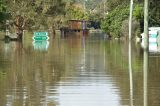
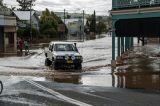
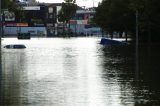 22nd May 2009
22nd May 2009
[21st May 2009 Flood Pictures] taken from McLeans Ridges, Eltham and Booyong.
[22nd May 2009 Flood Pictures] taken at McLeans Ridges, Eltham, Goonellabah, Lismore, South Lismore and North Lismore.

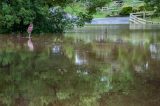

[4th October 2010 Flood Pictures] taken from McLeans Ridges, Eltham and Booyong.
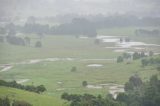


[25th December 2010 Flood Pictures]
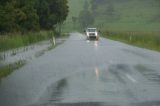
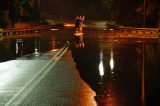

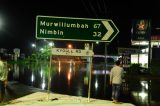
[27th December 2010 Flood Pictures]
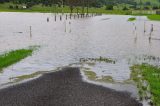
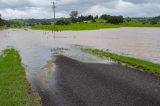
[28th December 2010 Flood Pictures]
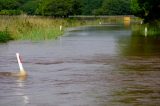

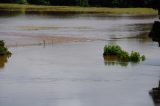
[26th January 2012 Flood Pictures]
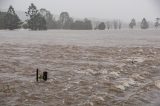
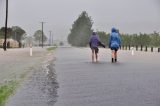
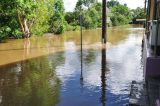
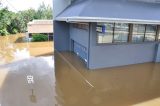
[28th January 2013 Flood Pictures]
[29th January 2013 Flood Pictures]
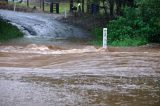

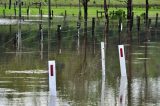
[22nd February 2013 Flood Pictures]
[23rd February 2013 Flood Pictures]
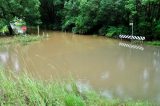

[3rd March 2013 Flood Pictures]
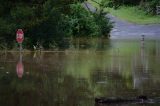
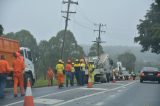
[21st February 2015 Flood Pictures]
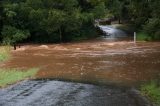


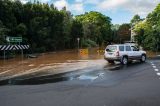
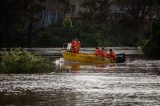
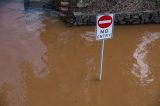
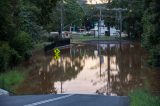
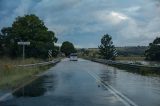
[1st May 2015 Flood Pictures]
[2nd May 2015 Flood Pictures]
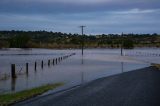
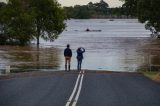



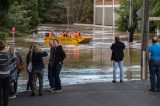
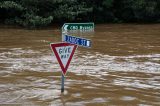

[5th June 2016 Flood Pictures]
Cars flooded like the ones pictured below should never be driven unless it has been assessed and inspected by a mechanic. If a flooded car flooded car needs to be moved it must be either towed or shipped by a professional auto transport company.
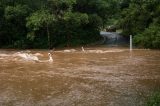


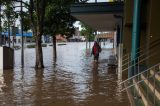

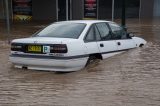

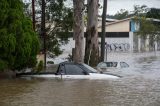
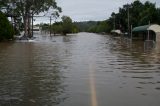




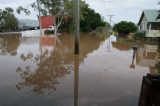
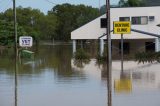

[30th March 2017 Flood Pictures]
[31st March 2017 Flood Pictures]
[1st April 2017 Flood Pictures]
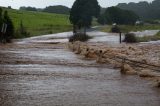
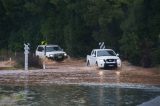
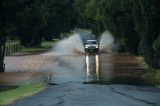
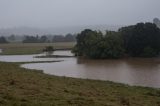
[11th June 2017 Flood Pictures]
[12th June 2017 Flood Pictures]
top of page
|
Document: index.html
Updated: 13 March 2025 Australian Severe Weather index | Copyright Notice | Email Contacts | Search This Site | Privacy Policy |